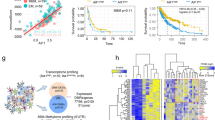Abstract
Nervous system tumors are one of the leading causes of cancer related death. Specific mechanisms facilitating the invasive behavior of gliomas remain obscure. Advanced simulation models of the in vivo response to therapy conditions should potentially improve malignant glioma treatment. Expressional profiling of vimentin––one of reliable pro-invasive tumor makers––in those simulation models was the goal of this study, in order to estimate a pro-invasive response of surviving malignant glioma cells under clinically relevant therapeutic conditions. Human U87-MG malignant glioma cells were used. These cells are characterized by the wild p53-phenotype, which is relevant for the majority of primary malignant glioblastomas. Experimental design foresaw the cells to undergo either irradiation or chemo-treatment with temozolomide alone, or combined treatment. Expression profiling of vimentin was performed by quantitative “Real-Time”-PCR under all treatment conditions simulating diverse tumor regions. Here we demonstrated that vimentin expression patterns in human malignant glioma cells strongly depend on cellular density, algorithms of drug delivery and chemo/radio treatment. Substantial differences were recognized between immediate and late therapy effects. Significant increase in vimentin expression levels was detected particularly in low-density cell cultures under durable treatment with constant concentration levels of temezolomide. Simulation of variable intratumoral regional conditions (central intratumoral regions vs. disseminated malignant cells in peripheral regions) demonstrated differential response of vimentin expression in malignant glioma cell cultures treated under clinically relevant conditions. Slight ebbing of expression levels as late effects of the treatment in confluent cultures may correspond to necrotic processes clinically observed in central intratumoral regions. Contrary, in disseminated malignant cells of peripheral regions therapy resulted in vimentin-inducing effects. This is in agreement with the clinical observations of an increased aggressiveness and malignancy grade of post-operatively chemo/radio-treated malignant gliomas.



Similar content being viewed by others
References
Arab S, Rutka J, Lingwood C (1999) Verotoxin induces apoptosis and the complete, rapid, long-term elimination of human astrocytoma xenografts in nude mice. Oncol Res 11:33–39
Dehghani F, Schachenmayr W, Laun A, Korf HW (1998) Prognostic implication of histopathological, immunohistochemical and clinical features of oligodendrogliomas: a study of 89 cases. Acta Neuropathol 95:493–504
Hegedus B, Zach J, Czirok A, Lovey J, Vicsek T (2004) Irradiation and Taxol treatment result in non-monotonous, dose-dependent changes in the motility of glioblastoma cells. J Neurooncol 67:147–157
Heid CA, Stevens J, Livak KJ, Williams PM (1996) Real time quantitative PCR. Genome Res 6:986–994
Horiguchi H, Sano T, Hirose T (2001) TP53 deleted cells in de novo glioblastomas using fluorescence in situ hybridization. Pathol Int 51:187–192
Mahesparan R, Read T A, Lund-Johansen M, Skaftnesmo KO, Bjerkvig R, Engebraaten O (2003) Expression of extracellular matrix components in a highly infiltrative in vivo glioma model. Acta Neuropathol 105:49–57
Provenzale JM, York G, Moya MG, Parks L, Choma M, Kealey S, Cole P, Serajuddin H (2006) Correlation of relative permeability and relative cerebral blood volume in high-grade cerebral neoplasms. AJR Am J Roentgenol 187:1036–1042
Rutka JT, Ivanchuk S, Mondal S, Taylor M, Sakai K, Dirks P, Jun P, Jung S, Becker LE, Ackerley C (1999) Co-expression of nestin and vimentin intermediate filaments in invasive human astrocytoma cells. Int J Dev Neurosci 17:503–515
Sallinen SL, Sallinen PK, Haapasalo HK, Helin HJ, Helen PT, Schraml P, Kallioniemi OP, Kononen J (2000) Identification of differentially expressed genes in human gliomas by DNA microarray and tissue chip techniques. Cancer Res 60:6617–6622
Trog D, Yeghiazaryan K, Fountoulakis M, Friedlein A, Moenkemann H, Haertel N, Schueller H, Breipohl W, Schild H, Leppert D, Golubnitschaja O (2006a) Pro-invasive gene regulating effect of irradiation and combined temozolomide-radiation treatment on surviving human malignant glioma cells. Eur J Pharmacol 542:8–15
Trog D, Fountoulakis M, Friedlein A, Golubnitschaja O (2006b) Is current therapy of malignant gliomas beneficial for patients? Proteomics evidence of shifts in glioma cells expression patterns under clinically relevant treatment conditions. Proteomics 6:2924–2930
Trog D, Moenkemann H, Breipohl W, Schueller H, Schild H, Golubnitschaja O (2007a) Non-sufficient cell cycle control as possible clue for the resistance of human malignant glioma cells to clinically relevant treatment conditions. Amino Acids 32:373–379
Trog D, Yeghiazaryan K, Schild H, Golubnitschaja O (2007b) Pro-invasive molecular events in human malignant glioma cells strongly depend on algorithm of chemo/radio treatment, cellular density, and drug delivery. Eur J Pharmacol (accepted)
van Meter T, Dumur C, Hafez N, Garrett C, Fillmore H, Broaddus WC (2006) Microarray analysis of MRI-defined tissue samples in glioblastoma reveals differences in regional expression of therapeutic targets. Diagn Mol Pathol 15:195–205
Wild-Bode C, Weller M, Rimner A, Dichgans J, Wick W (2001) Sublethal irradiation promotes migration and invasiveness of glioma cells: implications for radiotherapy of human glioblastoma. Cancer Res 61:2744–2750
Author information
Authors and Affiliations
Corresponding author
Rights and permissions
About this article
Cite this article
Trog, D., Yeghiazaryan, K., Schild, H.H. et al. Up-regulation of vimentin expression in low-density malignant glioma cells as immediate and late effects under irradiation and temozolomide treatment. Amino Acids 34, 539–545 (2008). https://doi.org/10.1007/s00726-007-0007-4
Received:
Accepted:
Published:
Issue Date:
DOI: https://doi.org/10.1007/s00726-007-0007-4




